Peter Marino channels Mapplethorpe’s trinity of sex, flowers and nudes
Architect Peter Marino channels photographer Robert Mapplethorpe's trinity of sex, flowers and nudes at Gallerie Thaddaeus Ropac in Paris
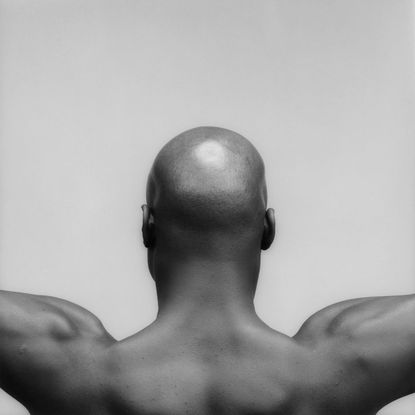
Every new show on Robert Mapplethorpe – and often, there are many running simultaneously – presents an opportunity to view his provocative work through a different interpretative lens. With Peter Marino as curator of 'XYZ', a Mapplethorpe exhibition at the Galerie Thaddaeus Ropac in Paris, the statement is as much about space as subject matter. Or, as he tells Wallpaper*, ‘I’m hoping to achieve something, if I may say, that appears a little more focused than what has been shown before.’
Most notably, the internationally renowned architect has impeded entry to the main gallery with a black wall featuring a trio of images that correspond to the themes of Mapplethorpe’s well-known X, Y, and Z portfolios (X for sex, Y for floral still lifes, Z for nudes). Visitors are forced to first confront this grouping – Marino’s so-called ‘table of contents’ – before turning one corner or the other to arrive into a darkened, temple-like space. It's a seemingly sacred backdrop for images that, at their most erotic extreme, might qualify as profane. Each of the three walls features an arrangement of 18 photos relating to the themes, but not, as Marino makes clear, a selection lifted directly from the portfolios. (Several have come from the permanent collections of the Guggenheim Museum, The Getty Museum and LACMA; Thaddaeus Ropac has represented the artist’s work since 2000).
This staging, says Marino, circumvents the feeling of 'walking into a void.' As revelatory as this sounds, given that it goes against most gallery architecture, it wasn’t his only reason. ‘I also don’t like, what I call, making value judgments. If, for a viewer, you walk directly into that wall, you are automatically saying, "Ah, that is my most important thing." And on purpose, I said, no, all three are equally important.’ Thus, the sadomasochism, sexuality charged flora and sculpted male nudity exist both independently of each other, and as a harmonised whole (one, that should be noted, is not suitable for children).
Finally, on the fourth wall (the reverse of the one installed for the show) is a single image of the photographer’s eyes, as if he has been watching everyone all along. In the outer gallery, meanwhile, is a series of 17 Polaroid images divided between explicitly sexual and intriguingly, experimentally abstract – the two sides of Mapplethorpe that Marino believes are 'never adequately explained'. In his mind, what they lack in aesthetic value, they make up for in establishing the artist’s early motivations.
If by this point, Marino comes off sounding a Mapplethorpe expert, that’s because he has been a collector for decades (he says they met briefly at Andy Warhol’s Factory but were never friends). In fact, his collection is so substantial that it will be traveling to Tokyo, followed by Osaka, for its own exhibition in 2017.
While Mapplethorpe isn’t known for obvious architectural themes – building facades, say – his style was unequivocally architectural. In fact, Marino began his personal collection with a tulip image because he was drawn to the shadow play from a mullioned window. ‘I always thought he had a very architectural eye,’ he says, adding how he arrived at the show's final edit by selecting examples in which Mapplethorpe worked both with and against ‘centrality’.
Asked what this reading of Mapplethorpe might reveal about him, Peter Marino, the architect laughs, pauses and replies, ‘I’m at a stage in life where I can afford to be brutally honest. I mean it’s liberating; it’s free; it’s great.’
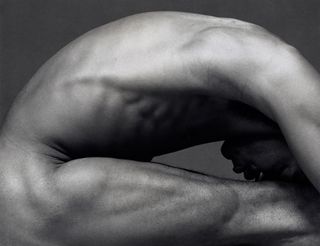
Jason, by Robert Mapplethorpe, 1983. Marino has plucked works from Mapplethorpe’s well-known X (sex), Y (floral still lifes), and Z (nudes) portfolios. Courtesy of Galerie Thaddaeus Ropac and The Robert Mapplethorpe Foundation

Flower, by Robert Mapplethorpe, 1980. Courtesy of the Los Angeles County Museum of Art and The Getty Research Institute Collection

Tulip, by Robert Mapplethorpe, 1984. Courtesy of the Los Angeles County Museum of Art and The Getty Research Institute Collection

Bird of Paradise, by Robert Mapplethorpe, 1981. Courtesy of Galerie Thaddaeus Ropac and The Robert Mapplethorpe Foundation
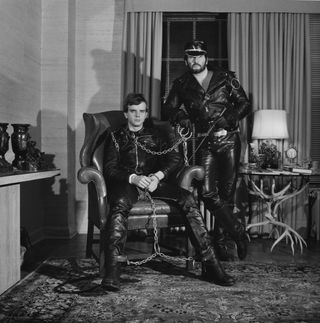
Jim Sausalito, by Robert Mapplethorpe, 1977. Courtesy of Galerie Thaddaeus Ropac and The Robert Mapplethorpe Foundation

Marino (pictured) has been a Mapplethorpe collector for decades, having met him briefly at Andy Warhol’s Factory. Photography: Manolo Yllera. Courtesy of the artist
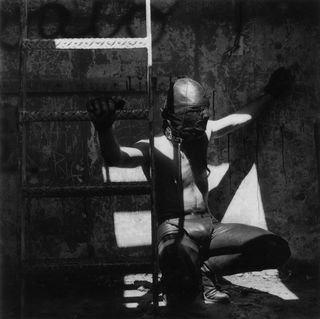
Jim Sausalito, by Robert Mapplethorpe, 1977. Courtesy of Galerie Thaddaeus Ropac and The Robert Mapplethorpe Foundation

The fourth wall features a 1988 self-portrait of the photographer’s eyes, as if he has been watching everyone all along. Courtesy of Galerie Thaddaeus Ropac and The Robert Mapplethorpe Foundation
INFORMATION
'XYZ curated by Peter Marino' runs until 5 March. For more information, visit the Galerie Thaddaeus Ropac website
Photography: Courtesy of Galerie Thaddaeus Ropac and The Robert Mapplethorpe Foundation
ADDRESS
Galerie Thaddaeus Ropac
7 Rue Debellyme
Paris
Wallpaper* Newsletter
Receive our daily digest of inspiration, escapism and design stories from around the world direct to your inbox
-
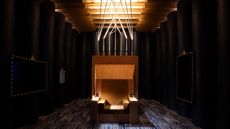 David Lynch presents 'A Thinking Room' at the Salone del Mobile
David Lynch presents 'A Thinking Room' at the Salone del MobileHere's a first look at the David Lynch Salone del Mobile 2024 installation, a cinematic experience within the fair curated by Antonio Monda
By Laura May Todd Published
-
 Riva El-Iseo is the legendary boat builder’s first fully-electric motor yacht
Riva El-Iseo is the legendary boat builder’s first fully-electric motor yachtThe Riva El-Iseo electric speedboat blends classic Italian lines with a silent, powerful and zero-emission powertrain
By Jonathan Bell Published
-
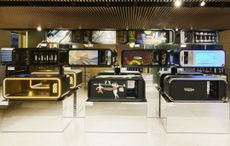 Technogym Home Bench 40 ways: designers interpret the home exercise classic
Technogym Home Bench 40 ways: designers interpret the home exercise classicTechnogym marks its 40 anniversary with 40 special editions of its Home Bench created in collaboration with international creatives
By Rosa Bertoli Published
-
 Josèfa Ntjam reveals mythical sculptures for her LVMH Métiers d’Art artist residency
Josèfa Ntjam reveals mythical sculptures for her LVMH Métiers d’Art artist residencyLVMH Métiers d’Art presents ‘Une cosmogonie d’océans’, celebrating Josèfa Ntjam’s artistic residence
By Tianna Williams Published
-
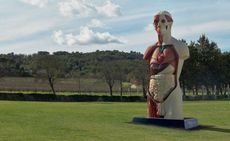 Damien Hirst takes over Château La Coste
Damien Hirst takes over Château La CosteDamien Hirst’s ‘The Light That Shines’ at Château La Coste includes new and existing work, and takes over the entire 500-acre estate in Provence
By Hannah Silver Published
-
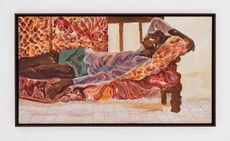 Ludovic Nkoth’s vibrant paintings reflect on migration
Ludovic Nkoth’s vibrant paintings reflect on migrationCameroon-born, New York-based Ludovic Nkoth uses acrylic paint to strike a balance between abstraction and figuration
By Ugonna-Ora Owoh Published
-
 Heads up: art exhibitions to see in January 2024
Heads up: art exhibitions to see in January 2024Start the year right with the Wallpaper* pick of art exhibitions to see in January 2024
By Hannah Silver Published
-
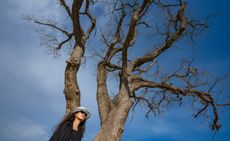 Tia-Thuy Nguyen encases Chateau La Coste oak tree in tonne of stainless steel strips
Tia-Thuy Nguyen encases Chateau La Coste oak tree in tonne of stainless steel stripsTia-Thuy Nguyen’s ‘Flower of Life’ lives in the grounds of sculpture park and organic winery Château La Coste in France
By Harriet Quick Published
-
 Paris Photo 2023: Eva Nielsen puts our impact on the Camargue in dynamic focus
Paris Photo 2023: Eva Nielsen puts our impact on the Camargue in dynamic focusAt Paris Photo 2023, ‘Insolare’ by Eva Nielsen, in collaboration with BMW Art Makers, is a compelling exploration of human impact on the landscape
By Sophie Gladstone Published
-
 The rich, creative life of Moomins creator Tove Jansson
The rich, creative life of Moomins creator Tove JanssonFinnish artist and Moomins creator Tove Jansson was free, independent and nonconformist, as a new Paris exhibition delving into her life and work reveals
By Hannah Silver Published
-
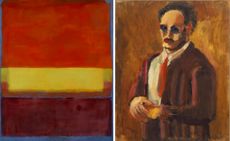 Mark Rothko retrospective to open at Fondation Louis Vuitton in October 2023
Mark Rothko retrospective to open at Fondation Louis Vuitton in October 2023The major Mark Rothko exhibition will bring 115 works to Fondation Louis Vuitton in Paris
By Hannah Silver Published